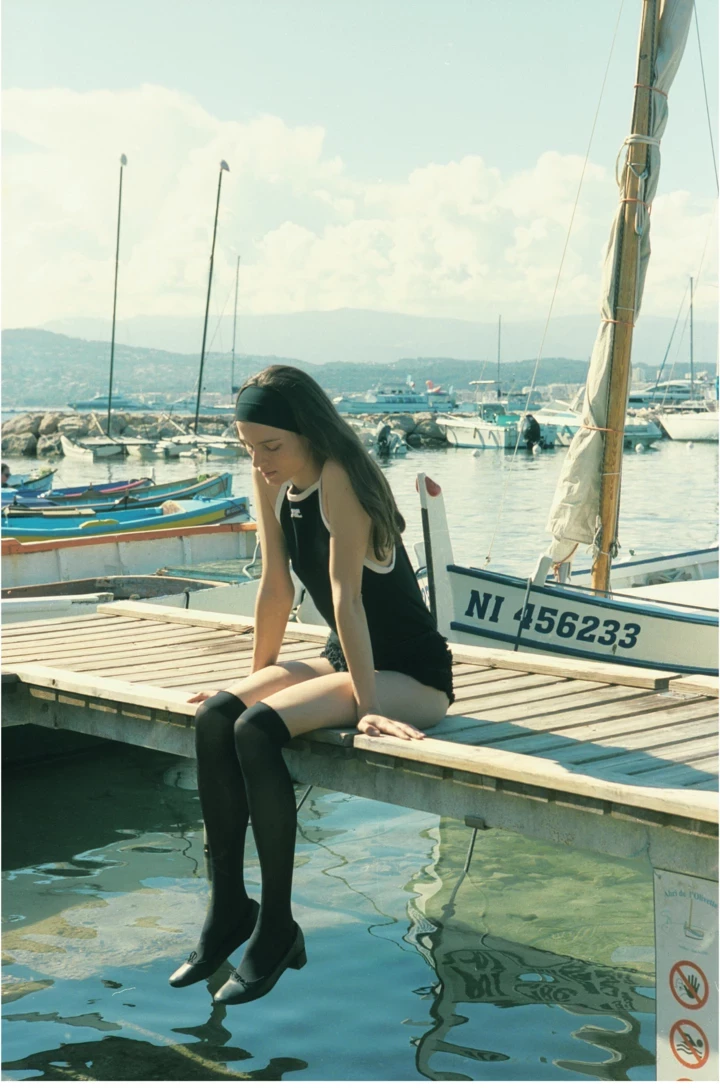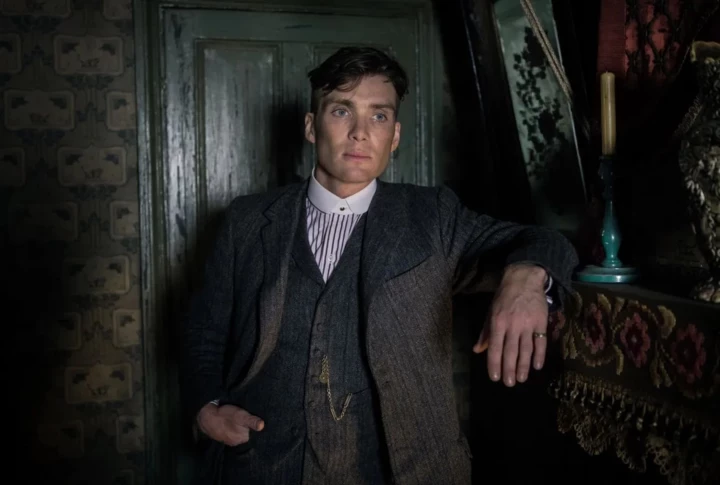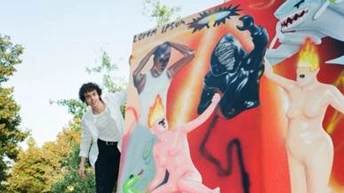
Save this storySave this storySave this storySave this story
All movies with complicated time schemes have the same problem to overcome: the movie’s dramatic sequences, like tiles in a mosaic, must be trimmed to fit into a rigid pattern. Certain information must be highlighted in order to emphasize dramatic connections that, in a chronological treatment, would be readily apparent. Filmmakers have to foreground these connections if they don’t want to run the risk of leaving viewers bewildered—which is to say, if they want to make commercial movies. There’s no better example of this currently than Luca Guadagnino’s much discussed new movie, “Challengers.” An intricate time-jumping framework is a large part of what makes the film distinctive, but the compromises made to achieve this are responsible for a pervasive feeling of emptiness.
Quick reminder: “Challengers” is the story of a tennis threesome; Art Donaldson (Mike Faist), Patrick Zweig (Josh O’Connor), and Tashi Duncan (Zendaya). I list her last because she’s the latecomer to the group. Art and Patrick are friends since childhood, fellow tennis-school trainees in the early two-thousands, who, as high-school seniors (and men’s-doubles junior champions), meet Tashi, a high-ranking young woman on the junior circuit. Art and Patrick, who will face each other in the singles final, both instantly fall for her. That night, in a scene in a hotel room with the three of them kissing, Tashi offers to give her phone number to the winner. Patrick wins, and she begins a relationship with him. But Patrick turns pro, while she and Art both go to Stanford. After a knee injury ends her playing days, she breaks up with Patrick and takes up with Art, who turns pro. Art and Patrick no longer speak. Tashi and Art marry and have a child. She coaches him to three Grand Slam titles, but, around age thirty, his game dips, and to help him get his confidence back she registers him in a low-level tournament. Patrick, whose career has never taken off, shows up there, too, and longs to beat Art, even as, running into Tashi, he also harbors hopes of rekindling his relationship with her.
The movie, written by Justin Kuritzkes, tells this story mainly as flashbacks from the final on-court showdown between Patrick and Art, which is established as taking place in 2019. Scenes from that match start and end the film and punctuate the action throughout. From early in the film, title cards guide viewers through the leaps in time—two weeks earlier, a few days later, thirteen years earlier, three years later, ten years earlier, the day before, and so forth. Many of the dramatic incidents do little but expound basic facts: Tashi is Art’s coach, the couple has a child, Art is fabulously successful, and Patrick is scuffling. Others exist to establish facile points about character; watching Tashi play for the first time, Patrick calls her hot, Art admires her backhand. The movie pivots on several decisions—why does Patrick turn pro early, why do Tashi and Art wait to do so—and on several important elements of backstory, including the relative wealth to which both Art and Patrick are born. These are dropped in and left undeveloped, in part because “Challengers” gives its characters virtually no identity, no existence other than what they do onscreen. They have no interests, no inclinations, and, oddly for a movie that depends so significantly on sexual relations, little physicality. (Only the three lead actors’ vibrant personalities and energetic performances lend the characters an illusion of substance.)
Much the same was true of Guadagnino’s 2017 hit, “Call Me by Your Name,” and it seems possible that he’s fundamentally uninterested in character—a problem, as there isn’t much else in his films besides the stories and some decorative imagery. But the defect showed far less in the earlier movie, which was more open-ended and classically constructed, whereas the tightly wound, potentially explosive dramatic mechanism of “Challengers” both heightens the tension and, in so doing, exposes what’s missing. The movie relies on the stark conflict of its triangular premise to arouse interest, and Kuritzkes lends extra intensity with acerbic dialogue (Art: “I love you.” Tashi: “I know”). However, the way that the action bounces back and forth across a span of more than a decade dissipates this emotional charge, turning the story into a puzzle to be solved. The more ingenious the narrative twists, the more the narrative is reduced to a series of clues, leading to a resolution that reveals the underlying equation.
What gets lost when a story is worked out this way is any feeling of dramatic necessity, and, paradoxically, such necessity is inseparable from a sense of freedom and of the possibility of choice. With a rammed-tight dramatic structure, dénouements arise not out of the temperaments and inclinations of characters—they more or less don’t have any—but from a mechanism imposed on the story. There isn’t enough flash, enough excess, enough room for imperfection, for details that don’t fit into the schema. And when a schema is as complex as the one in “Challengers” it can accommodate only two kinds of details: ones that add up, plus a few red herrings.
In 1966, Jean-Luc Godard—challenged at a panel discussion to agree that every movie needs a beginning, a middle, and an end—answered, “Yes, but not necessarily in that order.” Yet, for all his radically innovative approach to movie narrative, most of his features have those three elements in exactly that order. He usually filmed without a script and wrote scenes in the course of the shoot, an improvisatory approach that makes tight-fitting puzzle-like structures all but impossible. In contrast, his great directorial contemporary Alain Resnais made films that were famous for drastically skipping around in time, and was obsessed with the writing stage, working with such notables as Marguerite Duras, Alain Robbe-Grillet, Jorge Semprún, and Jules Feiffer.
Resnais wasn’t constrained by the manipulation of time, because he was after something very unusual. His shifting time schemes yield a different form of dramatic freedom; namely, the freedom of memory, and indeed of thought. The individual scenes within these structures teem with loose-ended details and characterizations and also with images of a finely composed intricacy. This technique produced awe-inspiringly challenging movies, not only in style but also in substance—and that substance was mighty and urgent. In the nineteen-fifties and sixties, Resnais made films that involved the Holocaust, Hiroshima, the Algerian War, and the Spanish Civil War—and did so at the troubled intersection of history and memory. His 1961 film “Last Year at Marienbad” is almost a byword for cinematic enigma; less often noted is that its opacities, centered on conflicting memories regarding a sexual encounter that may not have been consensual, places it squarely among the filmmaker’s movies of historical atrocity. Properly understood, a movie’s form is as physical as its substance; the relationship between them is much like that of an architectural framework to a building’s appearance and function. Resnais creates a cinematic architecture to match the forbidding complexity of his subjects.
With “Challengers,” there’s no danger of forbidding complexity. When scenes that happen years apart are juxtaposed, the meaning is self-evident. Far from surpassing narrative boundaries, the movie’s scenes and events fill them in, in the manner of cards being turned face up. Because of the lack of loose ends and non-informational details, “Challengers” has no politics, whether personal or historical. The movie skips through its years, days, and hours frictionlessly, displaying no points of contact with the public life of the times. It takes place in a contextual void—without even pop-culture references to suggest what music or movies or TV shows the characters are interested in. Absent, too, is any reflection of the trio’s sense of life, even regarding their own actions or memories, and even in the area that has become the movie’s emblem—its supposed sexiness.
The prime display of carnal power in “Challengers” is a scene that occurs the night when Tashi first meets Art and Patrick, at a posh party during a junior championship tournament, in 2006. She joins them in their hotel room and asks them to sit next to her on the bed, one on each side. She kisses Art and then Patrick; then, as the two guys caress Tashi and kiss her on the lips, their lips meet, too, and then Tashi pulls back and leaves Art and Patrick kissing. Though the scene is superficially erotic in its slow pace and its implications of foreplay, it’s foreplay interruptus, and what’s interrupted isn’t only an encounter but, far more important, how the characters feel about it.
What benumbs “Challengers” isn’t a lack of sex, exactly—there’s some, all thoroughly conventional and of interest only for the absurd plot point of Tashi talking tennis in bed—but a lack of talk about sex. What happens in the hotel room after Tashi leaves? Do Art and Patrick discuss what happened between them? Or pretend it didn’t happen? Guadagnino isn’t interested. As soon as Tashi leaves, he just cuts ahead to the 2019 match. There’s simply no space in the tight-fitting schema for conversation that doesn’t lock into the plot, whereas a chronologically ordered story can, without fear of confusing its audience, find space for sidebars, for meandering, for characters revealing themselves offhandedly in ways that don’t necessarily move the plot ahead.
What makes a movie, or a moment, sexy isn’t the amount of skin that’s shown or what the characters get up to. It’s a mood, the sense that the characters themselves are experiencing something sexy, are excited and vulnerable. This can happen even when there’s no actual sex nearby: the scene in Joseph Mankiewicz’s adaptation of “Guys and Dolls” in which Jean Simmons exuberantly sings “If I Were a Bell”—with free-swinging gestures and a teasing drawl—has more of an erotic shiver than anything in Guadagnino’s film. In fact, the ostensible heat of “Challengers” hits its point only twice, in a recurring nonsexual gesture—a little maneuver, with racquet and ball, performed by Patrick on the court, that is understood to signify that he and Tashi have had sex. It’s the movie’s one true inspiration, and it gets its dramatic power from where it shows up in the story: at a point where narrative gamesmanship has been set aside and the story is moving chronologically at last. ♦
Sourse: newyorker.com







